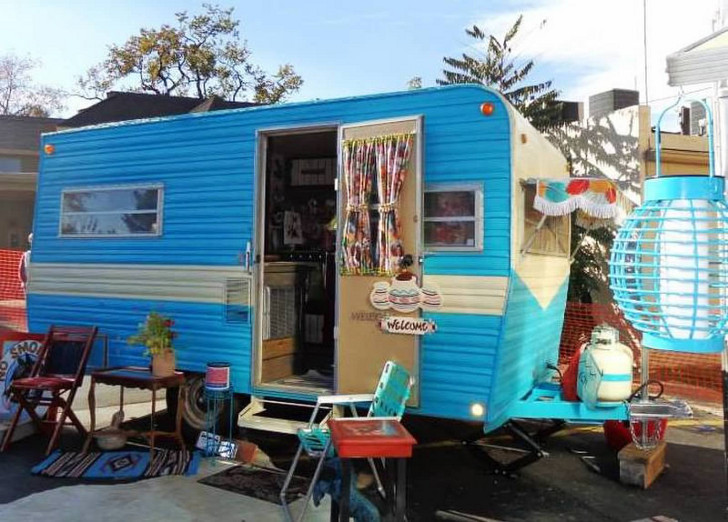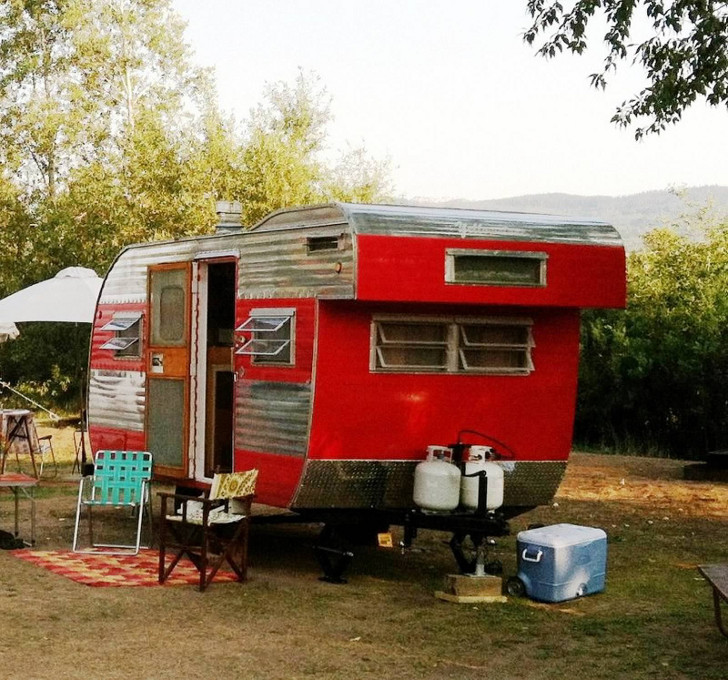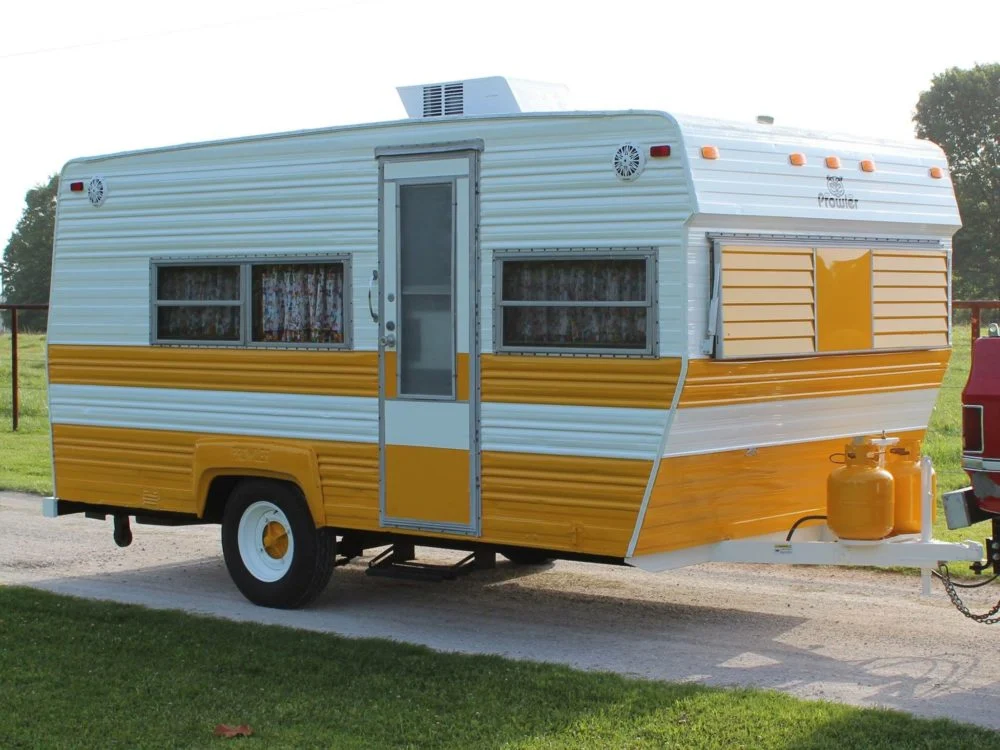Vintage Trailer Project Inspection Advice About Water Damage
April usually does not consider a vintage trailer project until she does thorough inspections on the candidate. She will crawl in, under and on top of the potential fixer-upper before getting serious about a deal.
The inspection begins by looking for water damage, the biggest villain and downfall of old trailers. Rotten wood is the number one reason why she’ll walk away from a sad, old trailer.
Don’t get serious until you know about water damage.

“If it has too much water damage where I’ll have to remove complete walls or the ceiling and likely remove the exterior ‘skin’ (exterior aluminum siding), I now walk away, even from a free one,” she says.
If you spot water damage upon visual inspection, see wood discoloration and veneer separation, chances are there’s at least 30% more severe damage that you cannot see within the interior and exterior walls of the trailer, she advises.
“I inspect the wood panels around windows, corners and check the floor for ‘soft’ spots,” she says.
Sometimes water damage can creep up in unusual places or be hidden by décor or patching, so she looks behind cushions, curtains, under rugs and carpet, inside cabinets and closets.
The trailer’s original flooring is also a good indicator if sub floor water damage exists. April will pull apart the trailer’s original bench seats for a closer look in hopes she can evaluate its condition.
Sometimes water damage isn’t a deal breaker.

As tried and true as her methods are, April warns that sometimes water damage isn’t a deal breaker during her vintage trailer restoration inspection. Some minor water damage around ceiling vents, windows and wood panels is easy enough to fix as long as you do not have a lot of wood rot in the interior wood braces or wood floor of the trailer.
More Vintage Trailer Project Inspection Advice to Consider
If the trailer passes her water damage benchmarks, it goes on to the next level in April’s review. Other factors she includes on her vintage trailer project inspection advice checklist include:
- How special and unique is the year, model and shape? “If it’s ‘special,’ I might consider taking on a bit more of a project,” she says.
- What’s the outside look like? Being exposed to the outdoors means that many vintage trailers will have some wear and tear, like hail damage. But a trailer with large gashes in the skin, panels separated at corners, unsealed seams and broken windows means water damage that’s expensive to repair. “Skin replacement can also be very expensive and hard to match, plus is not a one-person job,” she says.
- What’s it Cost? “My pockets are not deep so I try and consider all the costs that it will take to make the trailer complete and safe,” she explains. Of course, her cost estimations are based on what she’s learned from previous projects which some first time buyers may not know. She was quoted $1,500 to repair the interior electrical system in her first trailer, which was also the catalyst to restoring her own trailers.
Most people fall into the trap of underestimating their skills and budget when choosing a vintage trailer to fix up. April advises novices to slow down during the hunt and inspection – and be realistic. “You will probably go beyond your budget and the project will take longer than expected,” she cautions. But in the end, owning a vintage travel trailer is well worth the learning curve in her opinion.
Don’t overestimate your budget or skills.

Now that we have the vintage trailer project inspection advice out of the way, our next discussion with April will review other vintage trailer project criteria, like safety systems and the fun part, décor!
Keep in mind that April does not do complete ‘floor up’ nor custom restoration trailer projects. If you have any questions regarding owning your first vintage trailer, please feel free to reach out to her .




Loved the article! Just wondering…have you ever considered buying a trailer to get the frame and starting over from scratch to make it how you would want? It wouldn’t be vintage…but would that matter…if you wanted to have a place to live in or for camping part-time?
great, great article! we helped a lady friend look for a small “canned ham” to repair/remodel for her retirement-3 years from now…she ended up a with a 1970 forrester “barn find.” before this one was found, we saw lots and lots of trailers that people actually wanted money for! even flyte camp wouldn’t have touched some of the junk we saw for sale…
firs timers may even want to consider a partially re-done camper to put their touches on the first time around; that’s what we did-after the first mistake!!